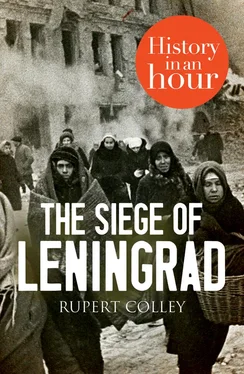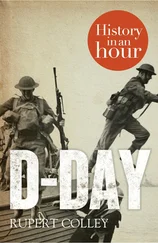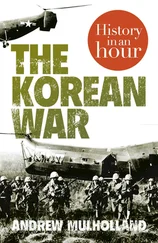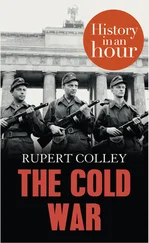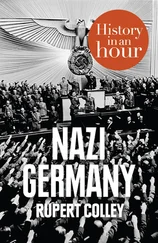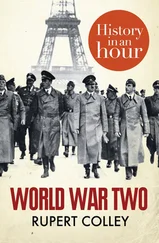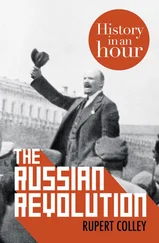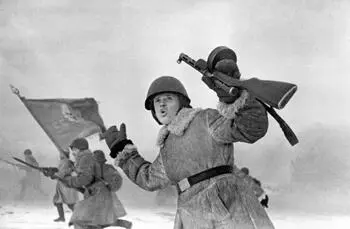
Red Army soldiers go into battle, 1943
RIA Novosti archive, image #93172 / Vsevolod Tarasevich / CC-BY-SA 3.0
The volunteers received precious little training and were, if lucky, equipped only with out-of-date weapons – old rifles, grenades and instructions on how to make petrol bombs, colloquially known as Molotov cocktails. The first division of this amateur army was formed on 10 July and after cursory training, sent to the front to join the regular soldiers of the Red Army on 14 July. Not many survived. Women and children were advised that if the Germans broke into the city, they should pelt them with stones or throw boiling water over them. The instruction caused resentment – if the Red Army was incapable of stopping the Germans, then what chance the civilian?
As soon as war was announced, sandbags started appearing. All the city’s famous monuments were soon covered, as were civic buildings and museums. Then houses and apartment blocks were sandbagged. People put sticky tape in their windows in a criss-cross pattern to prevent the glass from shattering when the bombs started falling. Privately owned radios were confiscated, lest civilians were adversely influenced by enemy propaganda. As owners of radios had had to register their purchase, it was not difficult for the authorities to keep tabs on those who failed to hand in their radios. They were allowed instead to have small loudspeakers within their homes, wired to the city’s public address system, which routinely broadcast patriotic messages and warned against defeatism or cowardice.
Posters, leaflets, noticeboards and newspapers sprung up, all reinforcing the correct message. Rumour-mongers faced harsh penalties for their loose tongues. But rumours of course circulated, especially once the fighting had started. The loud speakers, in Orwellian portent, blared continually of the successes at holding the Fascists at bay but kept hidden the huge loss of life as ill-prepared and ill-equipped troops went into battle.
The propaganda warned constantly of the enemy within and whipped up a frenzy of spy mania. People became convinced that German agents and fifth columnists were within their midst, sabotaging their efforts and relaying vital information back to the Germans. The paranoia was perhaps justified – the Germans had captured a warehouse full of Red Army uniforms. Anyone who looked different, with clothes considered too Western, or with an accent or name that sounded foreign, was eyed with suspicion. Almost 12 per cent of Leningrad’s 1941 population was of German, Finnish or Baltic descent, and many were interned for the duration of the war. Tram conductors were banned from calling out the names of stations so as to confuse any potential spies on their carriages; city maps and guidebooks were withdrawn from bookshops and libraries; church bells and factory whistles were silenced. Someone asking for directions was suddenly viewed as a suspect and anyone acting ‘oddly’ was liable to be reported.
On 18 July, food rationing was introduced. People were given ration cards which expired after one month. Even the issuing of ration cards was designed to keep the population in check and on message. There were four categories, with the highest category allocated the largest ration, so it was in the interest of these people to remain in a position so as not to be relegated to a lower category. Working hard in a manner that was recognized and informing on unreliable elements were two ways of maintaining one’s top category. To begin with, food, if not plentiful, was still available but prices shot up making it unavailable for all unless you were deemed worthy enough of being in the top category. Those working in factories were also allocated an extra ration, which provided a strong incentive for workers to remain at their posts, however weak and malnourished they became.
Half a million great works of art belonging to the Hermitage Museum, including collections of diamonds and precious stones, were too vulnerable to remain in the city. Packed into special protective crates, most were shipped out of the city towards the Urals in an armoured 31-car train, far away from the German bombs. The museum’s chief curator wept as the train departed. Meanwhile, the Hermitage was used as a bomb shelter.
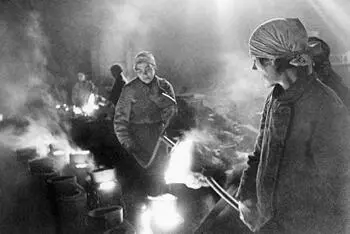
Factory work during the siege
RIA Novosti archive, image #348 / Vsevolod Tarasevich / CC-BY-SA 3.0
Factories were urged to increase output, targeting each individual employee to work harder. Notices were posted by each machine, extolling greater effort, ‘Worker, what have you done for the defence of Leningrad?’ Graphs were displayed each day showing the output of every worker. Those who worked hardest were awarded with a little red flag next to their machine, while those who worked less efficiently were shamed into greater effort and, for the repeat offenders, occasionally subjected to a mock trial. In July 1941, the city began to evacuate its industrial output. Factories were dismantled and re-erected as far to the east as Siberia and along with the machinery, much of the skilled workforce went with it.
Evacuation Evacuation The German Advance The Men in Charge Under Attack Hunger Death in a Cold City The Road of Life Spring 1942 The Symphony Leningrad Liberated The Aftermath Appendix 1: Key Players Appendix 2: Timeline of Siege of Leningrad Copyright Got Another Hour? About the Publisher Конец ознакомительного фрагмента. Текст предоставлен ООО «ЛитРес». Прочитайте эту книгу целиком, купив полную легальную версию на ЛитРес. Безопасно оплатить книгу можно банковской картой Visa, MasterCard, Maestro, со счета мобильного телефона, с платежного терминала, в салоне МТС или Связной, через PayPal, WebMoney, Яндекс.Деньги, QIWI Кошелек, бонусными картами или другим удобным Вам способом.
Within a week of the invasion, the city authorities decided to evacuate 392,000 children out of the city. The first evacuations took place on 29 June, taking away the first 15,000 children. The process was chaotic, and dogged with bureaucracy resulting in heartbreaking scenes and sometimes tragedy. Mothers not engaged in essential work were allowed to accompany their children. But often families were split up, with the mothers transported while their children were left behind. The first trains packed with children promptly went in the wrong direction, to the west, heading straight towards the Germans. When they returned to the city, their mothers had already left – in the opposite direction.
After the initial evacuations, the authorities then felt that too many women were leaving and that the city still had need of their labour – their children would have to depart alone. Women became desperate with anxiety. Mothers begged to be allowed to join their children or to keep their children with them. But evacuation was declared compulsory for all children under the age of fourteen. Many of the children would arrive at the station or marshalling yard and, due to the disorganization, be made to wait up to four days. Their food, so carefully packed by their anxious mothers, would be consumed within the first few hours. Rumours that German planes were strafing the evacuation trains caused even greater consternation. The authorities tried to dismiss the rumours as ‘hostile and provocative’ but then rumour became known fact.
Читать дальше
